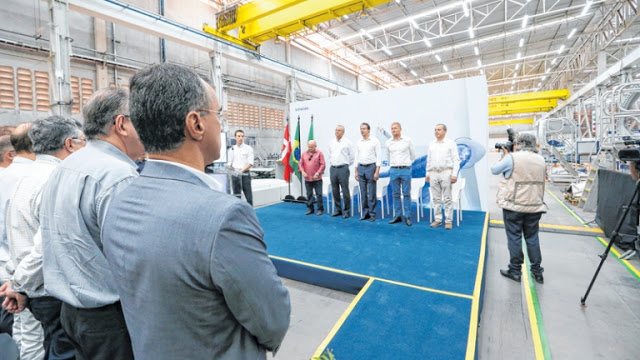Brazil will need to train 3,737 professionals over the next five years to support the scheduled installation of an additional 9.7 GW of onshore wind power by 2025.
The conclusion comes from a study published by the Global Wind Energy Council (GWEC) and the Global Wind Organization (GWO).
The global wind industry will need to train more than 480 thousand people during this period to meet the demand of the energy market and the manufacture of wind turbines.
“As the expansion of the global wind industry accelerates, job creation opportunities are of increasing interest throughout the supply chain,” says GWEC.
GWEC highlights the opportunities for regional and national governments that “increasingly see green energy as an engine for economic growth and social development, as well as a route to decarbonize power grids.”
Wind farms can replace jobs with 3.3 million jobs in five years
In addition to leading the growth of wind energy in Latin America, Brazil is at the forefront in the Americas in the growth of new certified training centers and also in the volume of workers being trained, the study says.
In 2020, this market grew 101% and 13 certified training providers formed a workforce of more than 5,500 people.
Despite not calculating the market demand for offshore wind energy in Brazil, the report draws attention to the Brazilian potential in this segment.
Minister promises regulation. This week, Bento Albuquerque announced that the Ministry of Mines and Energy is working on a regulatory framework for offshore wind farms. It is unclear whether the government will issue a bill or propose a resolution to the National Energy Policy Council (CNPE).
“The issue is still in internal studies, in order to point out the best way for this regulatory framework,” the ministry clarified.
“We are going to present the essentials by the end of the year: a regulatory framework for this important energy source, which will undoubtedly have Brazil as one of the pillars of its electricity matrix,” said the minister.
Highlights of the Global Wind Workforce Outlook 2021-2025
Of the 480,000 trained workers needed worldwide, 308,000 will be used to build and maintain onshore wind projects and 172,000 for offshore wind farms;
More than 70% of this new global demand will come from ten countries: Brazil, China, Japan, India, Mexico, Morocco, Saudi Arabia, South Africa, the United States and Vietnam.
They are jobs in the construction, installation, operation and maintenance segments of the wind energy value chain. It does not cover jobs in purchasing, wind turbine manufacturing (the most labor-intensive segment), and transportation;
Increasing training capacity in large wind markets, such as the United States and China, fosters job creation and higher productivity;
In emerging economies, in turn, training networks aligned with international safety standards contribute to the long-term sustainability of the industry;
There is great untapped potential for the industrial education and training supply chain in countries around the world.
With 751 gigawatts (GW) of wind power capacity already installed, the wind industry has generated nearly 1.2 million jobs worldwide to date, according to the International Renewable Energy Agency (Irena).
By 2020, there were approximately 550,000 wind energy workers in China, 260,000 in Brazil, 115,000 in the United States and 63,000 in India, according to a global survey by GWEC Market Intelligence.
In a study published in May, GWEC projects the creation of 3.3 million direct jobs in the sector by 2025.
The report concludes that this pace of training may not be sufficient to train the other 280,000 workers needed to install the anticipated 490 GW of new capacity over the next five years.
For Jakob Lau Holst, CEO of GWO, there is a lot of talk about the amount of renewable GW needed for the world to achieve net zero emissions, but there is a lack of discussion about the workforce that achieves this ambition.


